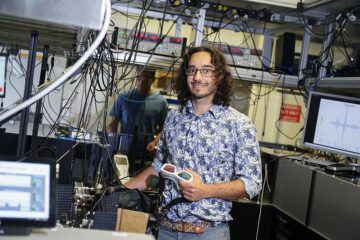Slimming gene – New nucleic acid molecules and polypeptides involved in lipid metabolism

The present invention relates to the newly identified fruit fly gene schlank that is involved in the control of the fat metabolism. Larvae in which this gene is defective are not able to store fat and lose their entire fat reserves.
The corresponding protein schlank has a regulatory function as it promotes the lipid synthesis and at the same time inhibits the fat mobilisation from fat reserves. The reduction of storage fat in larvae with a mutated schlank gene results from a failure of lipogenesis and/or increased lipolysis. Mammals carry a group of genes (so-called Lass genes) that are structurally very similar to schlank. This resemblance is so striking that Lass genes from mice can partially compensate for the defective schlank gene in mutant flies. Due to these strong parallels the Lass genes possibly take on a similar function in the lipid metabolism. The mammalian Lass family members might therefore be a target for the prevention or treatment of lipid-based metabolic diseases. This raises hope for the development of new medicines with which obesity could be fought.
Weitere Informationen: PDF
PROvendis GmbH
Tel.: +49 (0)208/94105 10
Ansprechpartner
Dipl.-Ing. Alfred Schillert
Media Contact
Alle Nachrichten aus der Kategorie: Technologieangebote
Neueste Beiträge

Neue universelle lichtbasierte Technik zur Kontrolle der Talpolarisation
Ein internationales Forscherteam berichtet in Nature über eine neue Methode, mit der zum ersten Mal die Talpolarisation in zentrosymmetrischen Bulk-Materialien auf eine nicht materialspezifische Weise erreicht wird. Diese „universelle Technik“…

Tumorzellen hebeln das Immunsystem früh aus
Neu entdeckter Mechanismus könnte Krebs-Immuntherapien deutlich verbessern. Tumore verhindern aktiv, dass sich Immunantworten durch sogenannte zytotoxische T-Zellen bilden, die den Krebs bekämpfen könnten. Wie das genau geschieht, beschreiben jetzt erstmals…

Immunzellen in den Startlöchern: „Allzeit bereit“ ist harte Arbeit
Wenn Krankheitserreger in den Körper eindringen, muss das Immunsystem sofort reagieren und eine Infektion verhindern oder eindämmen. Doch wie halten sich unsere Abwehrzellen bereit, wenn kein Angreifer in Sicht ist?…

















